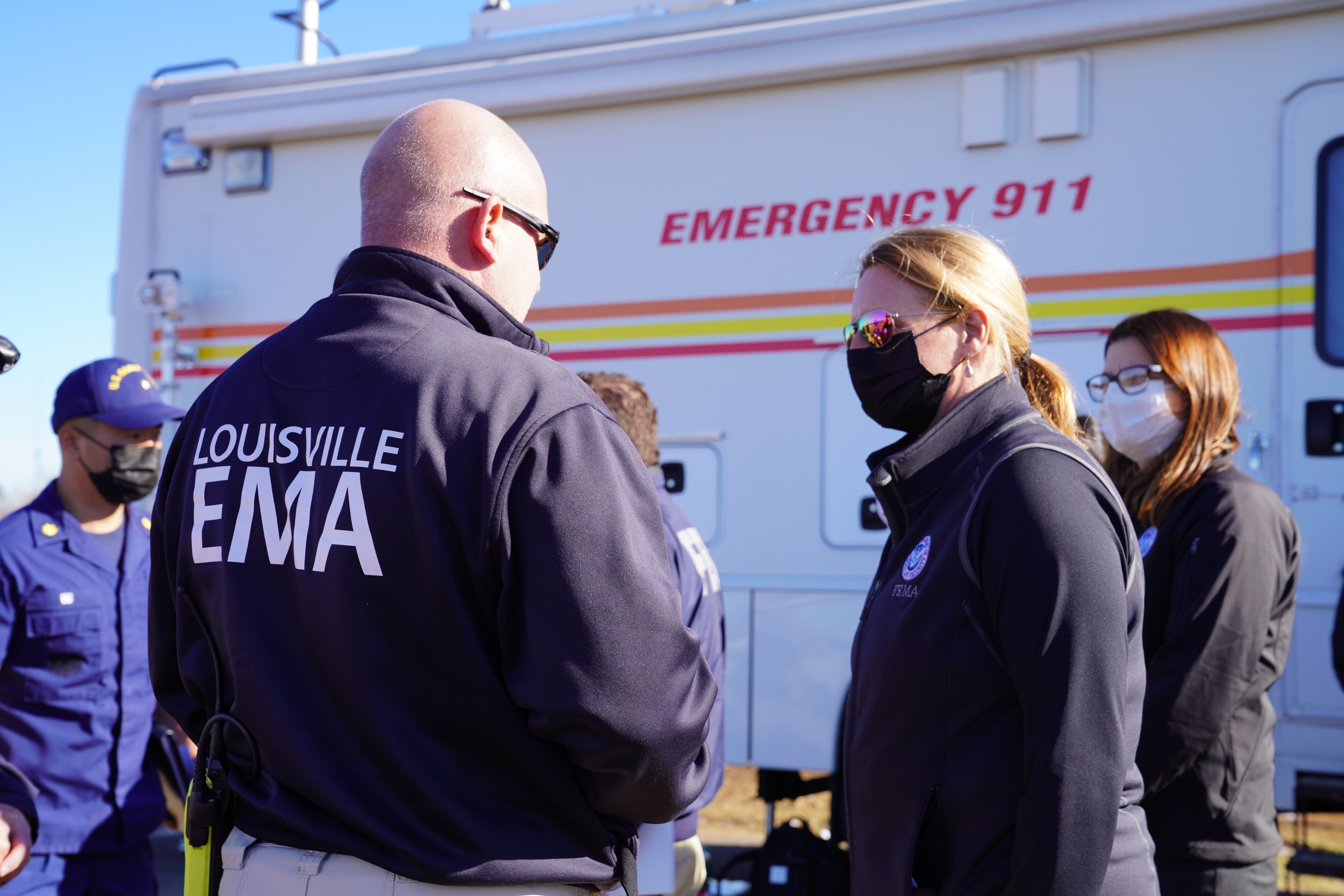The world is becoming more unpredictable, with frequent and severe natural disasters, pandemics, and human-made crises. Besides the persistent global health crisis, the US has encountered an unmatched series of natural disasters in the past few years. Between 2016 and 2022, there have been 122 distinct disasters with damages exceeding one billion dollars each. Amidst this, emergency assistance and disaster recovery efforts are pushed beyond their limits. The traditional methods of emergency management are increasingly overwhelmed in the face of evolving threats and limited resources.
Artificial Intelligence (AI) and Machine Learning (ML) offer powerful tools to augment the capabilities of the emergency assistance workforce and improve the outcomes of disaster response and recovery efforts. The technology is improving at breakneck speeds. TechSur Solutions envisions and plans for a world where the Emergency Management workforce can use Grants Management systems that are fully optimized, secure, and efficient. AI/ML can empower Emergency Management agencies (such as the DHS Federal Emergency Management Agency) to make risk-informed decisions and respond rapidly to emergencies for a Prepared Nation.
Applications of Artificial Intelligence and Machine Learning in Emergency Management
 Image: (December 14, 2021) MAYFIELD, Ky. — Louisville Emergency Management Director E.J. Meiman and Administrator Criswell discuss response operations near the Mayfield Consumer Products factory that was destroyed by a tornado late Friday.
Image: (December 14, 2021) MAYFIELD, Ky. — Louisville Emergency Management Director E.J. Meiman and Administrator Criswell discuss response operations near the Mayfield Consumer Products factory that was destroyed by a tornado late Friday.
The global market for incident and emergency management is projected to expand from an estimated USD 121.4 billion in 2022 to USD 163.6 billion by 2027, representing a Compound Annual Growth Rate (CAGR) of 6.2%. The market is expected to receive a significant boost from the escalating frequency of natural disasters worldwide. In these challenging times, AI/ML can play a role in enhancing emergency management efficiency in the following ways.
Resource Allocation
AI can help allocate critical resources, such as food, water, and medical supplies, to the most vulnerable and impacted locations. In order to optimize resource allocation in real-time, Machine Learning may examine past data on resource requirements and consumption trends. Hurricane Harvey in 2017 was one event that led to the successful implementation of a similar strategy to locate vulnerable regions.
Disaster Response
Analysis of real-time data from numerous sources, such as social media, sensors, and satellites is possible with AI. This can help pinpoint regions of damage, gauge the impact, and set priorities for response actions. During the California wildfires, the WiFire Lab developed an AI system called BurnPro 3D that used real-time data to predict the spread of the fire, allowing firefighters to prioritize their efforts and adjust their strategies in real-time.
Recovery Efforts
Artificial Intelligence makes it easier to prioritize recovery operations based on the most pressing needs. It further helps estimate the cost of recovery and assess the extent of damage. For example, an AI system, xView2, analyzed satellite imagery to identify and estimate the extent of damage caused by the Turkey-Syria earthquake, allowing emergency responders to prioritize recovery efforts and allocate resources more effectively.
Benefits of Incorporating Artificial Intelligence and Machine Learning
 Image: JENNINGS, La. (Oct. 11, 2020) — FEMA Administrator Pete Gaynor talks about the whole-of-government response and recovery efforts after Hurricane Delta during an interview with The Weather Channel. FEMA photo by Jocelyn Augustino.
Image: JENNINGS, La. (Oct. 11, 2020) — FEMA Administrator Pete Gaynor talks about the whole-of-government response and recovery efforts after Hurricane Delta during an interview with The Weather Channel. FEMA photo by Jocelyn Augustino.
Integrating Al/ML into the training and skill enhancement of emergency management personnel can yield multiple advantages, including the following.
- Improved Situational Awareness: Artificial Intelligence can give emergency management experts real-time alerts and insights. This empowers them to make quick, well-informed decisions.
- Better Decision-Making: Machine Learning enables emergency management professionals to make data-driven decisions. It is possible by analyzing massive amounts of data and providing insights into patterns and trends.
- Efficiency Gain: AI can automate routine processes like data collection and analysis. This allows emergency management specialists to concentrate on life-saving duties.
- Reduced Risk of Human Error: In complicated and time-sensitive emergency management scenarios, such as resource allocation and response planning, AI can reduce the risk of human error.
Successful Artificial Intelligence and Machine Learning Implementations in Emergency Management
DHS Federal Emergency Management Agency (FEMA) needed a resilient, modern system. This was crucial to evaluate each property and assess its flood risk based on data from hundreds of sources. They collected meteorological, geospatial, and other types of information. The agency gained valuable insights for faster and more accurate decision-making regarding flood insurance policies. TechSur Solutions created a modern, intelligent, DevSecOps-driven system for FEMA’s National Flood Insurance Program’s PIVOT program. Such experience empowers TechSur to take FEMA systems to the next level with our AI/ML expertise.
Here are a few examples of AI/ML solutions serving the Emergency Management sector:
University of California & FEMA AI-Based System
Recent studies have demonstrated the potential of Artificial Intelligence and Machine Learning in enhancing disaster preparedness efforts. Artificial Intelligence can enable more precise predictions of the potential impact of a disaster on the affected population and infrastructure. AI specialists achieve this by analyzing and interpreting large amounts of data related to natural disasters. Artificial Intelligence can generate models that identify high-risk areas and recommend mitigation measures to minimize the impact of such disasters. An illustration of this is the AI-based system developed by researchers at the University of California, Berkeley, which increases accuracy in predicting the impact of earthquakes on buildings in California. The system employs machine learning algorithms to analyze seismic data. It provides comprehensive information about the anticipated intensity and duration of an earthquake. The extent of damage it would inflict on various types of structures can also be determined by the system.
Similarly, FEMA used machine learning to analyze data from social media and other sources to identify areas of damage and prioritize response efforts during Hurricane Maria in 2017. The analysis enabled FEMA to deploy resources more effectively and save lives.
Copernicus Emergency Management Service
The European Union’s Copernicus Emergency Management Service uses Artificial Intelligence to analyze satellite images and other data to assess the impact of natural disasters, such as floods and earthquakes, and provide real-time information to emergency management specialists. The service has improved the speed and accuracy of response efforts and helped reduce the damage caused by disasters.
UNDP’s MHEWS System
Currently, The United Nations Development Programme (UNDP) is developing a nationwide multi-hazard early warning system (MHEWS) in Georgia. The primary goal of this system is to reduce the exposure of communities, livelihoods, and infrastructure to weather- and climate-driven natural hazards. To achieve this, the MHEWS requires accurate forecasts and hazard maps of severe convective events, specifically hail and windstorms. The system will use AI/ML technologies to analyze data from various sources, such as weather stations and satellites, to provide timely and precise forecasts. It will also create hazard maps to identify the areas at the greatest risk. This would allow emergency management professionals to allocate resources more effectively and prioritize response efforts.
Conclusion
Artificial Intelligence and Machine Learning has enormous potential to empower the emergency management workforce. It can proficiently improve the outcomes of disaster response and recovery efforts. AI/ML enhances situational awareness, improves decision-making, increases efficiency, and reduces human error. This enables emergency management professionals to respond effectively to evolving threats and save lives. Federal government agencies and other organizations can greatly benefit from incorporating Artificial Intelligence and Machine Learning into their emergency management strategies and training programs.
TechSur Solutions leads AI/ML initiatives at several Federal agencies, including the Institute for Museum and Library Services (IMLS) (with an award-winning AI program) and DHS U.S. Citizenship and Immigration Services (USCIS). TechSur implements Artificial Intelligence at USCIS to predict operational issues before they occur to support users and improve immigration processing used by 19,000 government employees and contractors working at 223 offices worldwide. TechSur Solutions offers a comprehensive suite of services. This includes platform engineering, application modernization, and AI-driven analytics. These help transform Emergency Management Grants Systems into a secure, streamlined, and user-centric system that aligns with agency strategic goals.
To learn more about how AI and machine learning can benefit your organization, contact TechSur, your agency’s partner in transforming emergency management.

